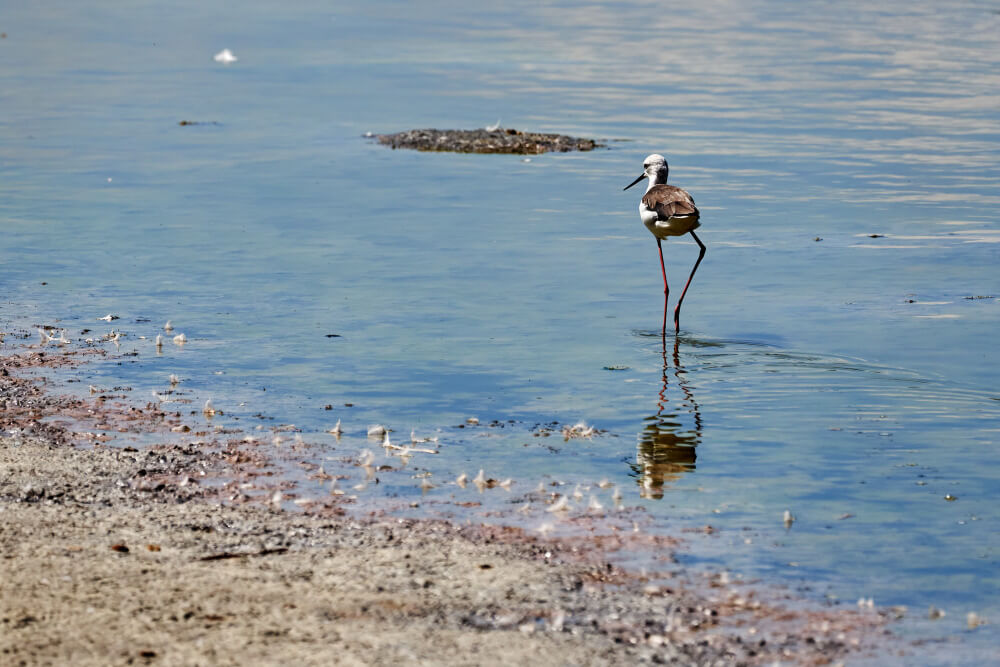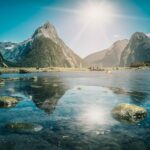
The Tongariro Crossing is more than just a hike; it’s a journey through some of New Zealand’s most stunning landscapes and unique ecosystems.
Whether you’re an avid bird watcher, a botany enthusiast, or simply someone who appreciates nature, this trek offers a chance to see a variety of wildlife in their natural habitat.
This guide will delve deep into the wildlife you can encounter, answer common questions, and provide tips to ensure you have a safe and respectful experience.
Common Questions and Concerns
- What kind of wildlife can I expect to see on the Tongariro Crossing?
- Are there any rare or endangered species I should look out for?
- Is it safe to encounter wildlife on the trail?
- What should I do if I encounter wildlife?
- How can I help protect the wildlife while hiking?
- What time of year is best for wildlife spotting?
- Are there specific areas along the crossing known for certain types of wildlife?
The Rich Biodiversity of the Tongariro Crossing
The Tongariro Crossing is renowned for its diverse ecosystems, ranging from alpine meadows to volcanic landscapes, each supporting a unique array of flora and fauna.
Here’s a closer look at what you might encounter:
Birds of the Tongariro Crossing
Kea (Nestor notabilis)
The Kea is one of the most recognizable birds in New Zealand, known for its intelligence and playful behaviour.
These alpine parrots are often seen in higher altitudes, particularly around the Red Crater and Emerald Lakes.
- Appearance: Green with orange underwings and a large, curved beak.
- Behaviour: Curious and often interacts with hikers. They are known to peck at backpacks and other belongings, so keep an eye on your gear!
- Conservation Status: Endangered. Efforts are being made to protect their habitat and reduce threats from predators.
Blue Duck (Whio)
The Blue Duck is a rare sight, but if you’re lucky, you might spot one in the fast-flowing streams and rivers along the crossing.
- Appearance: Slate-grey with a chestnut-coloured chest and a distinctive white bill.
- Behaviour: Prefers fast-moving waters and is an excellent swimmer.
- Conservation Status: Endangered. Conservation programs are in place to protect this unique species.
New Zealand Falcon (Kārearea)
The Kārearea is New Zealand’s only native falcon, known for its speed and agility.
- Appearance: Dark brown with a pale underbelly and a distinctive hooked beak.
- Behaviour: Often seen soaring above open areas, hunting for small birds and mammals.
- Conservation Status: Threatened. Efforts are being made to protect their habitats and reduce human disturbances.
Other Notable Birds
- North Island Robin (Toutouwai): Friendly and often curious about hikers.
- Fantail (Piwakawaka): Easily recognized by its fan-shaped tail and flitting movements.
- Tomtit (Miromiro): Small and black with a distinctive white chest.
Plant Life on the Tongariro Crossing
Alpine and Subalpine Plants
The Tongariro Crossing’s unique volcanic landscape supports a variety of hardy plant species adapted to the harsh conditions.
Mount Cook Buttercup (Ranunculus lyallii)
Known as the world’s largest buttercup, this plant is a highlight in the alpine regions.
- Appearance: Large, glossy green leaves with bright yellow flowers.
- Habitat: Prefers wet, alpine meadows and stream edges.
Hebes
Hebes are a diverse group of shrubs found throughout New Zealand.
- Appearance: Varied, but often with small, colourful flowers that attract pollinators.
- Habitat: From coastal to alpine areas, Hebes are highly adaptable.
Red Tussock Grass (Chionochloa rubra)
These grasses create striking visual contrasts in the landscape.
- Appearance: Tall, reddish-brown tufts.
- Habitat: Common in open, lowland areas.
Volcanic Plateau Vegetation
The volcanic terrain hosts a variety of plants adapted to the nutrient-poor soils and extreme conditions.
- Lichen and Mosses: These pioneers colonise the bare rock surfaces, creating a foundation for other plants.
- Mountain Daisies: Hardy plants with bright flowers that thrive in the volcanic soil.

Encountering Wildlife: Tips and Safety
Encountering wildlife on the Tongariro Crossing is one of the highlights of the trek.
Here are some tips to ensure both your safety and the safety of the animals:
Safety Tips
- Stay on the Trail: This minimises your impact on the environment and reduces the chance of disturbing wildlife.
- Keep Your Distance: Observe animals from a distance using binoculars or a zoom lens on your camera.
- Do Not Feed the Animals: Human food can be harmful to wildlife and can cause them to become dependent on handouts.
- Be Respectful: Avoid making loud noises or sudden movements that could startle animals.
- Dispose of Waste Properly: Carry out all trash and follow Leave No Trace principles to keep the environment pristine.
How to Help Protect the Wildlife
- Stick to Marked Paths: This helps protect the fragile ecosystems and minimises habitat disturbance.
- Report Sightings: If you see any rare or endangered species, report your sightings to park rangers. This information can aid in conservation efforts.
- Support Conservation Programs: Consider donating to or volunteering with organisations dedicated to preserving New Zealand’s wildlife.
Best Time for Wildlife Spotting
While the Tongariro Crossing is a year-round destination, certain times of the year offer better opportunities for wildlife spotting.
- Spring (September to November): Flowers are in bloom, and many birds are nesting.
- Summer (December to February): Longer days and warmer weather make for a pleasant hike, and alpine plants are at their peak.
- Autumn (March to May): Cooler temperatures and fewer crowds. Birds are still active, and the landscape takes on autumn hues.
- Winter (June to August): Snow can make the crossing challenging, but it’s a quieter time with fewer hikers. Be prepared for colder weather and check trail conditions.
Specific Areas for Wildlife Spotting
Certain sections of the Tongariro Crossing are known for their abundant wildlife.
Here are a few key areas to focus on:
Mangatepopo Valley
This area is rich in birdlife, including the North Island Robin and Tomtit. The valley’s streams may also attract the elusive Blue Duck.
Red Crater
While the harsh volcanic landscape might seem barren, it’s a good place to spot the Kea. These curious parrots are often seen around the crater.
Emerald Lakes
The lakes themselves are a sight to behold, but the surrounding area is also home to alpine plants and birds like the New Zealand Falcon.
Conclusion
The Tongariro Crossing offers an unparalleled opportunity to immerse yourself in New Zealand’s rich natural heritage.
From the playful Kea to the rare Blue Duck, the wildlife along this trek is as diverse as it is fascinating.
By following the tips in this guide, you can enjoy a safe and respectful experience while helping to protect these precious ecosystems.
Happy hiking!




